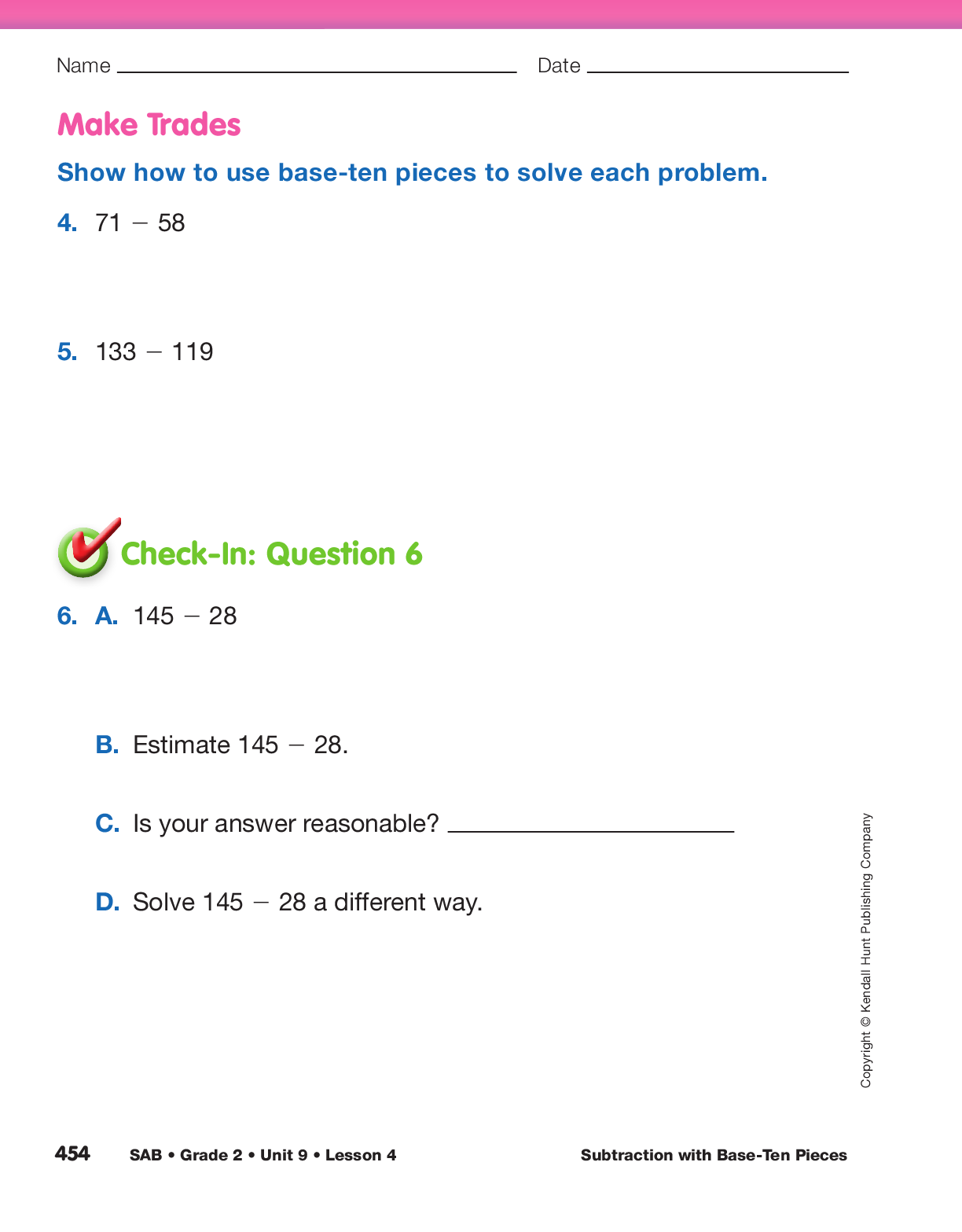Subtraction with Base-Ten Pieces
Est. Class Sessions: 2Developing the Lesson
Part 2: Subtraction Problems with Trades
Continue the activity by asking students to represent 57 with base-ten pieces. To help students think in terms of regrouping, list the various ways students can decompose 57, and include number sentences. For example:
5 skinnies + 7 bits (50 + 7 = 57)
4 skinnies + 17 bits (40 + 17 = 57)
3 skinnies + 27 bits (30 + 27 = 57), etc.
Ask:
Ask students to show the number 57 with their base-ten pieces. Tell them that they will be subtracting 39 and ask them first to estimate an approximate answer.
Write the subtraction problem on the board and ask students to solve it using their base-ten pieces. Tell them they can talk with their neighbor about solving it. Give them a few minutes to work on the problem. Circulate and observe how students are dealing with the need to subtract 9 bits from 7 bits. The problem is shown in Figure 2.
Ask:
If no one suggests trading one skinny for ten bits, ask probing questions like:
Have a student volunteer model the number with base-ten pieces and show the trade with the display pieces.
Ask:
Ask:
Provide several more problems that involve trading once, such as the problems in Figure 3. With each problem, ask the class to estimate the difference. Then ask a student to display and solve the problem, modeling the minuend (first number), making a trade as necessary, and then taking away the subtrahend (second number). Occasionally, ask students to add their answer to the amount taken away to see if they get the number they started with. Have them write number sentences.
Check for Understanding of Trading. Make sure students understand that trading does not change the number. It just changes the way it is partitioned. See Sample Dialog 2.
The third problem shown in Figure 3, 190 − 56, involves a zero in the ones place.
Ask:
Encourage students to solve the problem a second way to check their answer. For example, they can count up from 56. See Figure 4.
The problems in the Make Trades section of the Subtract with Base-Ten Pieces pages provide practice with solving problems that involve one trade. The amount of guidance and practice needed will depend on students’ experience and comfort level with making a trade to represent a different partition of a number. Do not expect mastery immediately.



















